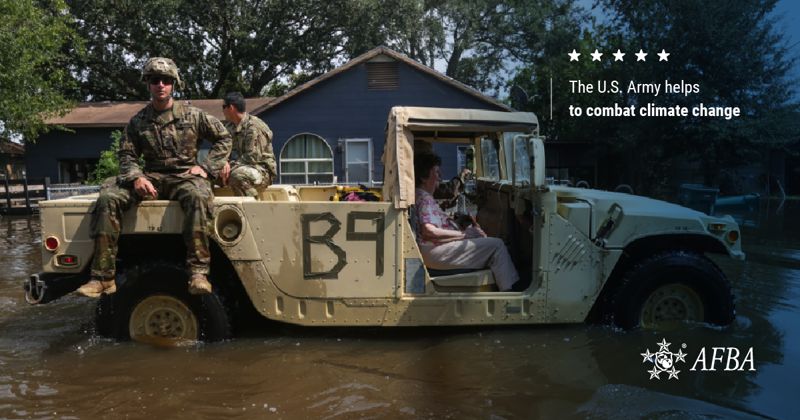Friday, April 22 is Earth Day. This year, the U.S. Army is taking part in a more integrated way than ever with its new initiative to "sustain the mission, secure the future to meet and defeat climate challenges," according to the U.S. Army Environmental Command.
Let's take a moment to dive into the project a little more in-depth.
The Pentagon and climate change
When it comes to the Pentagon and the climate crisis, the department has a history of keeping an eye on environmental concerns. However, based on new information and at the recommendation of scientific data, worries about climate change have only increased. According to the UN's Intergovernmental Panel on Climate Change (IPCC), the world is expected to warm by 3.2C (or 37.76F) this century.
Global warming is only one of the major climate concerns. The U.S. government is also worried about rising sea levels, carbon emissions and habitat destruction. The Pentagon itself has taken steps to create a new strategy regarding the climate issue by introducing the U.S. Army's first climate change strategy.
For example, climate-related issues can lead to conflict, which is where the Pentagon's interests are peaked. From dwindling resources to water wars, the environmental changes have a severe impact on the United State's defense policies.
As a massive contributor to the federal government's carbon footprint, The Army is taking accountability and leading by example to lower its environmental impact — currently, the department produces about 56% of the federal government's carbon footprint and 52% of its electricity use, according to the Washington Post.

A new strategy
In its first strategic plan released in February of 2022, the Army outlined its response to global-warming-driven conflicts. In its climate strategy, it hopes to cut back on its own negative impact on the earth. Here are a few of its goals:
- Cut back on the military's emissions by half in eight years (2030).
- Convert all noncombat vehicles to electric by 2035.
- Develop electric combat vehicles by 2050.
- A new kind of officer training for the changing climate, dealing with warmer and more extreme environments.
These may seem like ambitious goals, but the hope is that the Army can be more efficient and move into the future with the tools to mitigate the damage and prevent further issues. But it is not only about the future, it is imperative to take action now.
According to Christine E. Wormuth, who is the Secretary of the Army, "For today's Soldiers operating in extreme temperature environments, fighting wildfires, and supporting hurricane recovery, climate change isn't a distant future, it is a reality."
While these goals may seem out of the Army's regular line of work, Paul Farnan, the acting assistant secretary of the Army for installations, energy and environment made it clear that the new strategy is actually aiding its main mission of fighting and winning wars. Now, these two issues have become intrinsically linked.
Earth Day is another opportunity for the U.S. Army to prove its commitment to sustain the mission, and secure the future to meet and defeat climate challenges. To learn more about the Defense Department's activities on Earth Day, take a look at the partnership for the planet.

